
Taiwan’s 10 most popular street foods over the last decade
By Daisy Chung, Ivy Chen, & Eva Huang. Interactive development & interaction design by Julia Janicki
Welcome to Taiwan, an island where, despite its small geographic size, is truly a giant in the world of food. From its festivals to night markets, bountiful 7-Elevens to street vendors, Taiwan’s many delicious offerings remain one of the top reasons for tourists to visit.
We wanted to see how Taiwan’s most iconic street snacks shifted in popularity over the past 10 years (were some always popular? Did some have a huge rise in popularity?), so we dove into Google Trends data. Since Taiwan’s street foods run the complete gamut of flavor, we separated the data to look at the top five sweet snacks and the top five savory snacks.
Toggle to disable scroll-driven animations and view static graphics instead.
Meet Taiwan's savory street foods
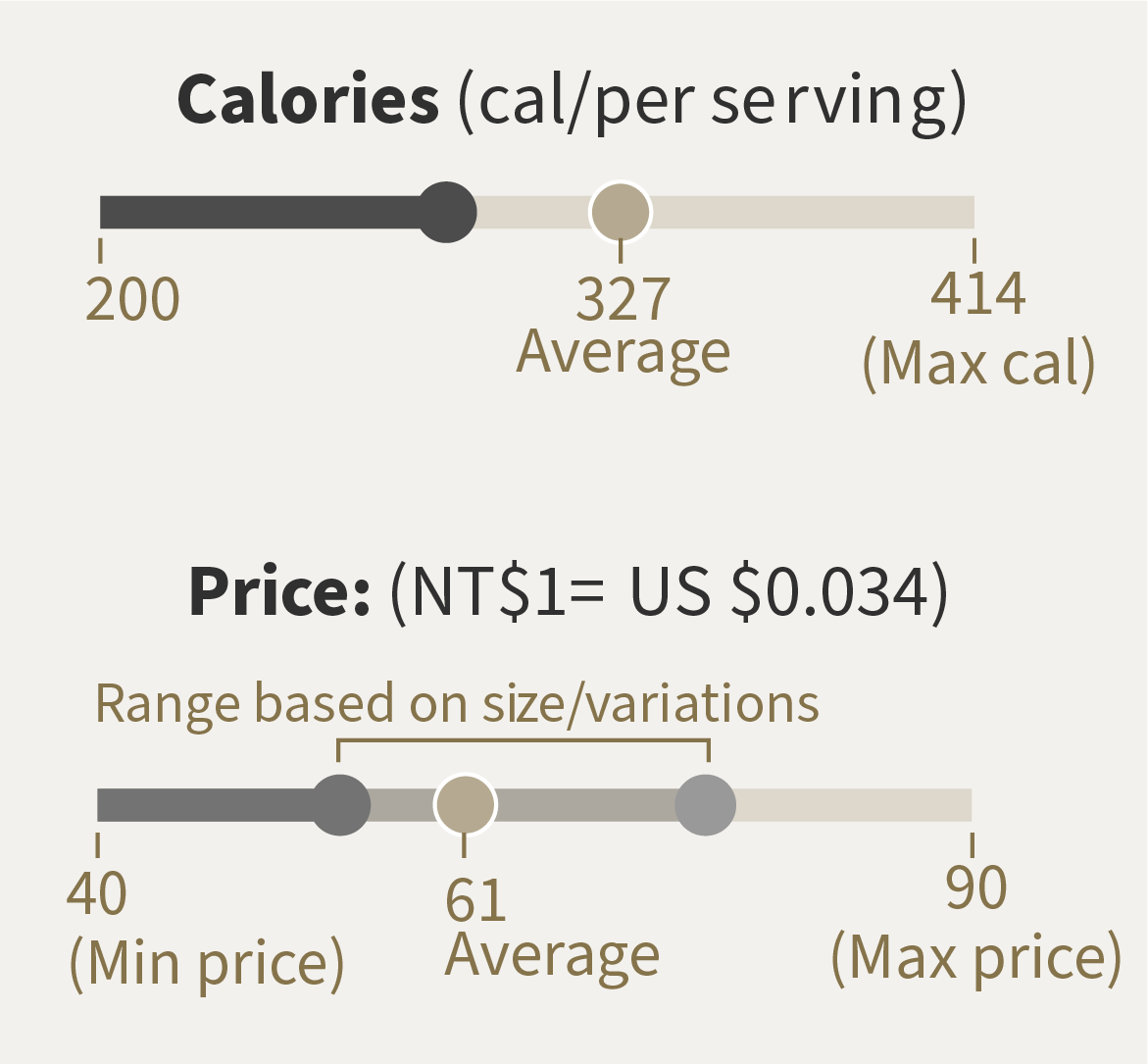

Popcorn chicken first originated in Tainan, Taiwan, in 1979. After observing the inconvenience of holding and carrying American-style fried chicken on the go, a couple reimagined the version that’s now unique to Taiwan: small boneless chicken pieces topped with basil, pepper, salt, and chili powder.

Legend has it that during the Qing dynasty, a scholar who had failed an imperial exam started selling tofu—and accidentally invented stinky tofu. Today, it’s a renowned dish prepared through fermenting and then deep-frying tofu. Though its pungent smells may linger, those that can get past its strong scent enjoy a soft, silky center and delicious taste.

Taiwanese meatball, known as “ba-wan” in Taiwanese Hokkien, is a gelatinous treat with an outer layer made of sweet potato starch, corn starch, and rice flour. Its filling varies depending on the region of Taiwan you’re in but often contains a mixture of pork, bamboo shoots, and shiitake mushrooms. Changhua County’s ba-wan is the most famous.

Taiwan’s fried chicken cutlets are easily spotted thanks to their large size, which is the result of its unique preparation. The chicken breast is butterflied, then pounded flat, marinated in spices, breaded, and quickly deep fried—resulting in a crispy outside and a juicy, tender inside.

The popular scallion pancake is a savory, non-leavened flatbread with scallions dispersed throughout the dough. You can flavor it with all kinds of toppings, like spicy sauce or an egg. Its origin is a mystery, with supposed links to pizza, naan bread, and even Marco Polo…
Meet Taiwan's sweet street foods
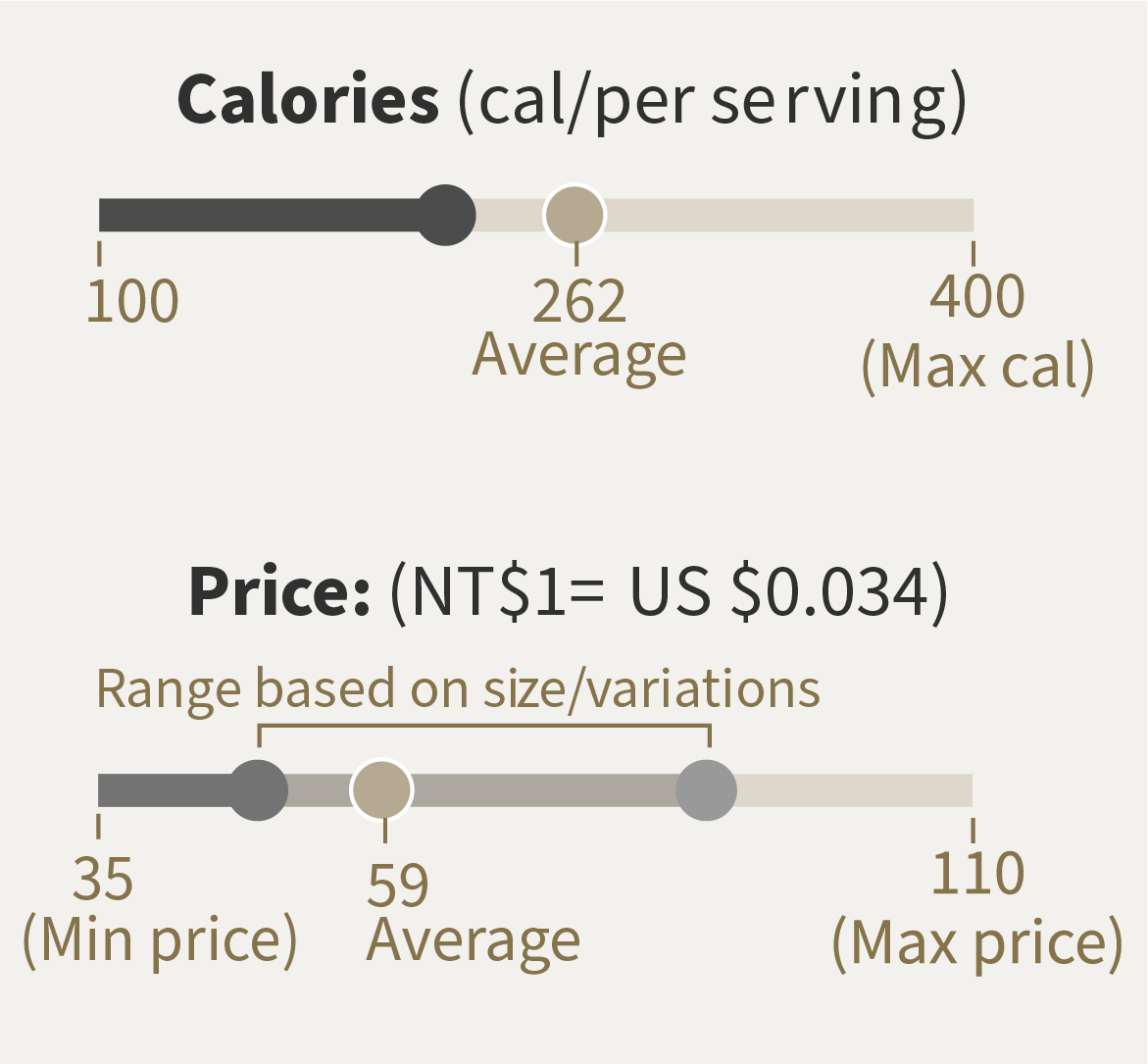
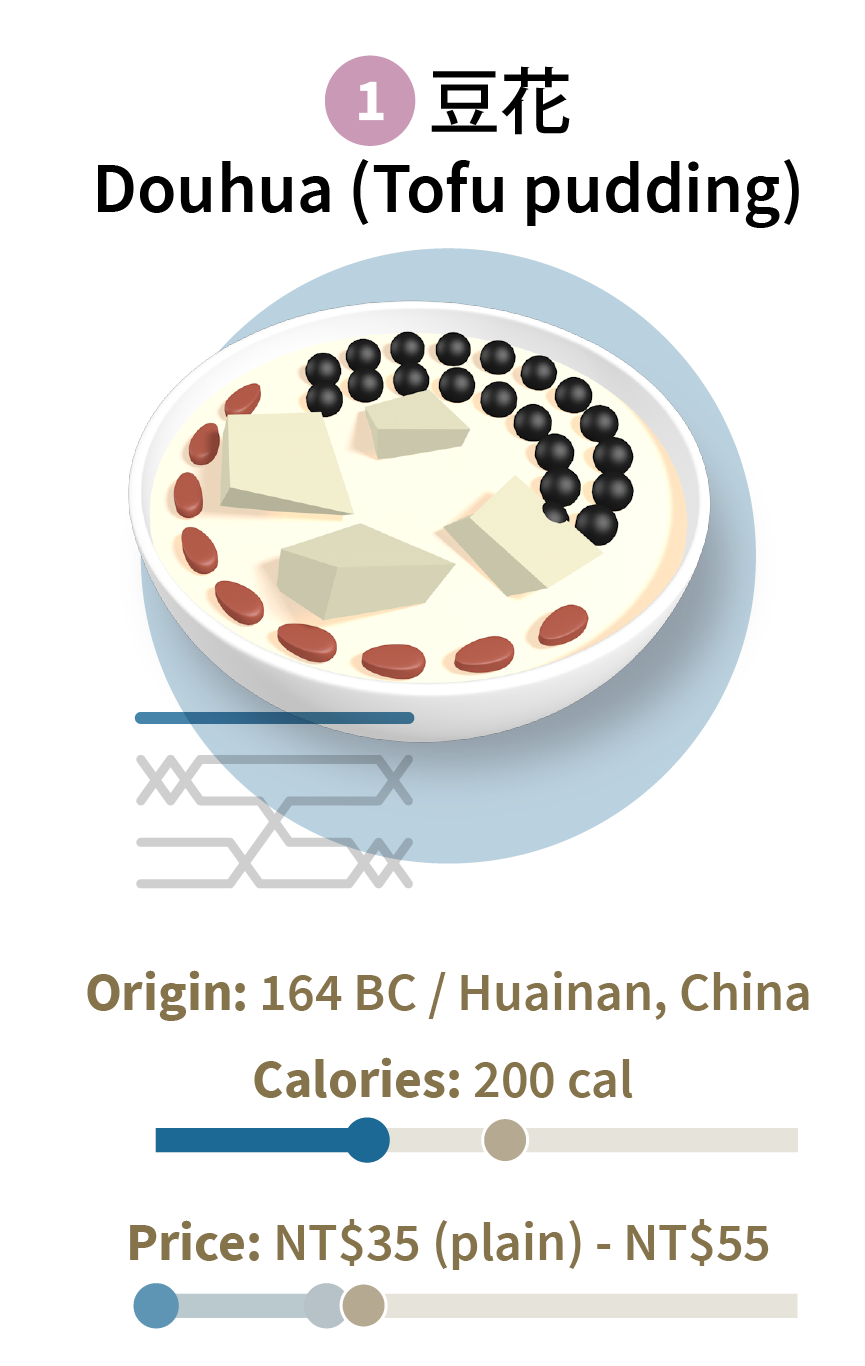
Douhua can be eaten sweet, savory, or even spicy depending on the region of east Asia you’re in. In Taiwan, douhua is enjoyed as a sweet, soft tofu pudding dessert often topped with mung bean, red beans, and/or peeled peanuts, as well as sweetened syrup, soy milk, fruit, or taro balls. It can be eaten hot or cold depending on the weather.
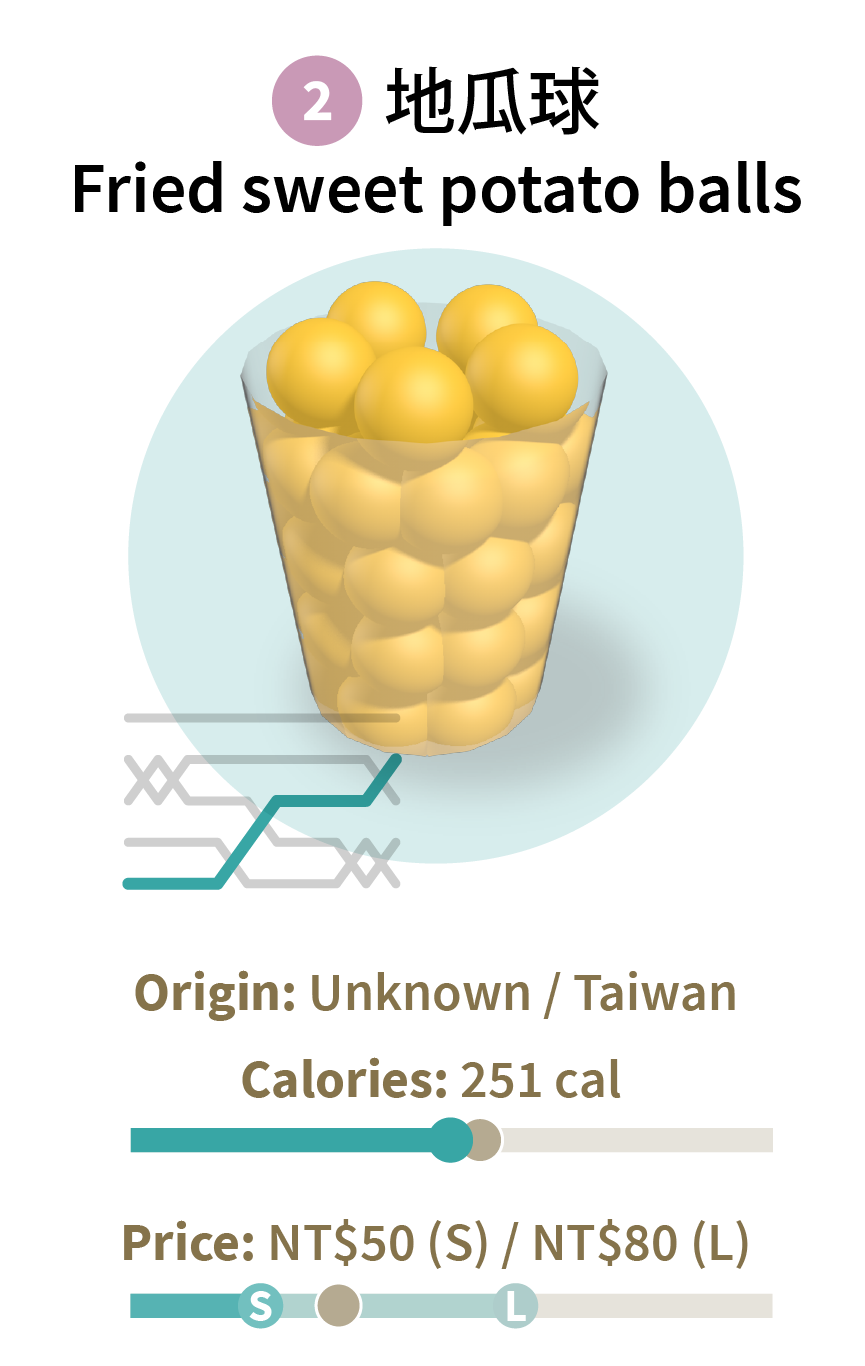
Sweet potato balls are another staple in Taiwan’s snack scene. Because of the tapioca flour used to make them, they have what’s known as a “QQ” texture. QQ is best described as a light and soft yet springy texture—think the tapioca balls in boba! They’re crispy on the outside, but soft and chewy on the inside. Fun fact: they’re also a vegan snack!
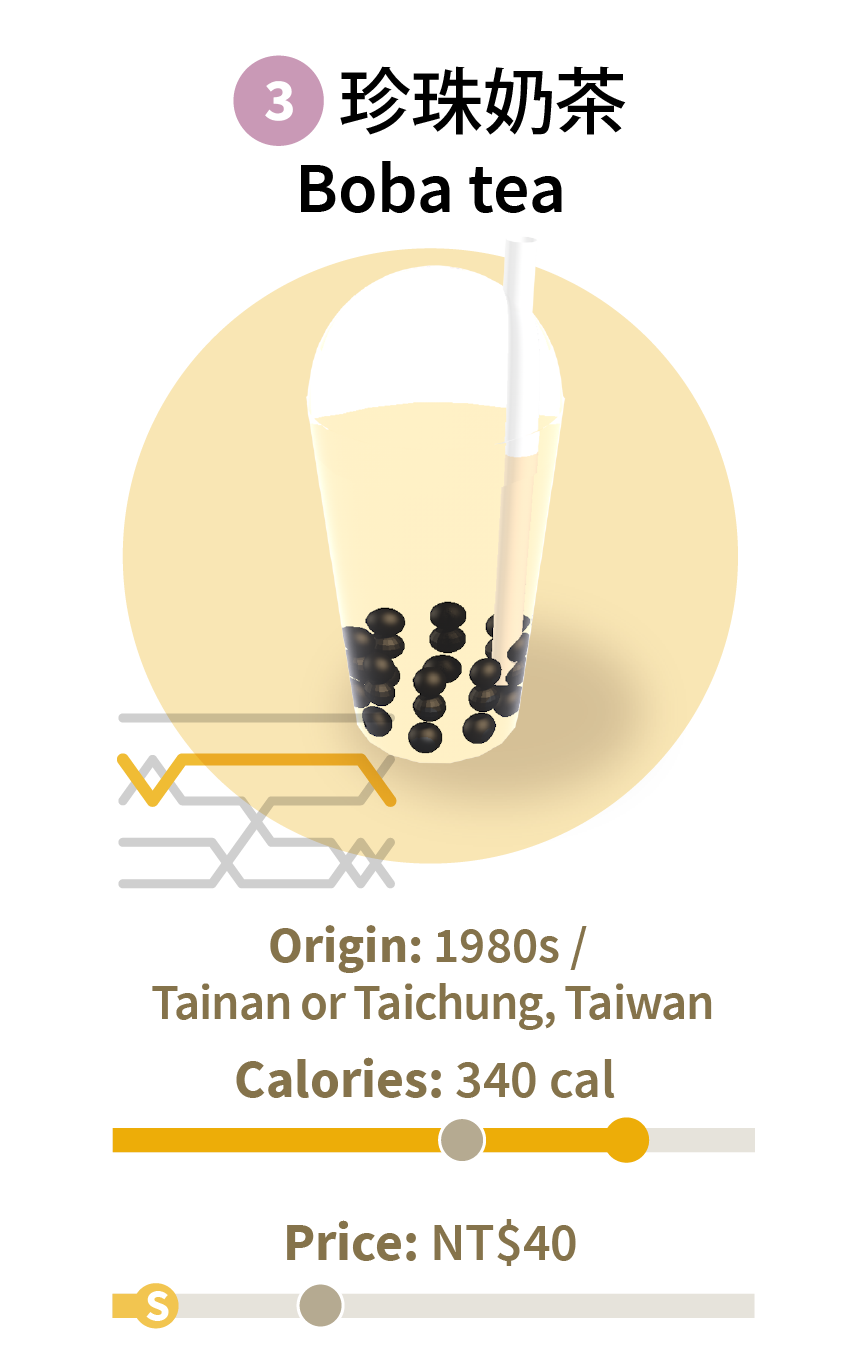
In its most basic form (often labeled as the “original” or “classic” on menus), boba tea consists of black tea, milk, ice, and chewy tapioca pearls, all shaken together like a martini. It’s served with a thick straw so that people can also enjoy the tapioca bubbles with each sip. Thousands of variations have been created since, and if you’re interested in exploring its literal millions of possibilities, check out Taiwan Data Stories’ full interactive feature.
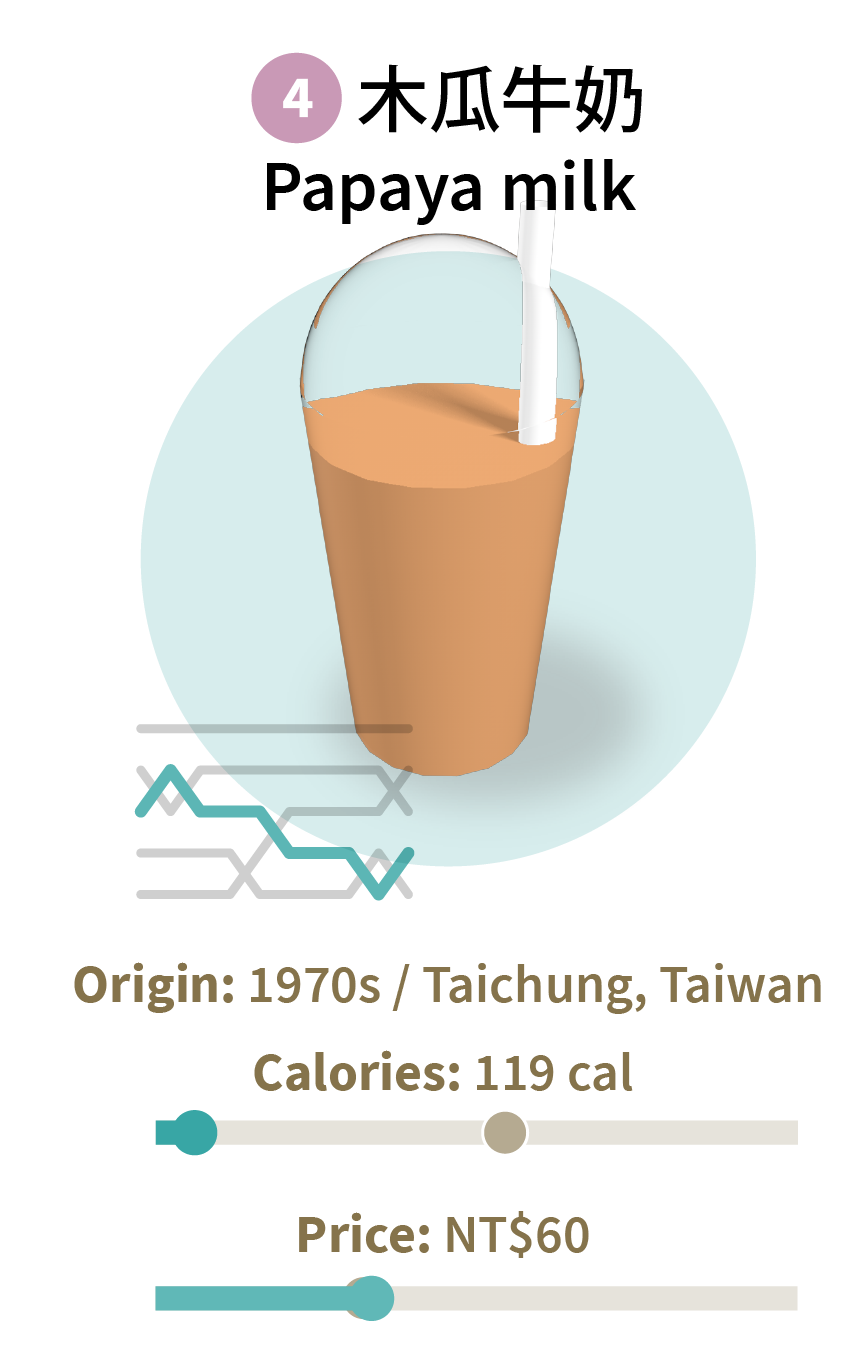
You’ve probably heard of bubble tea (or boba), but have you heard of papaya milk? Papaya milk is traditionally made of exactly those two ingredients: ripe papaya and milk. It’s creamy, mildly sweet, aromatic, and usually topped with a slight froth. It’s also quite a unique combination, given that its key ingredients thrive in completely different environments (both of which Taiwan has).
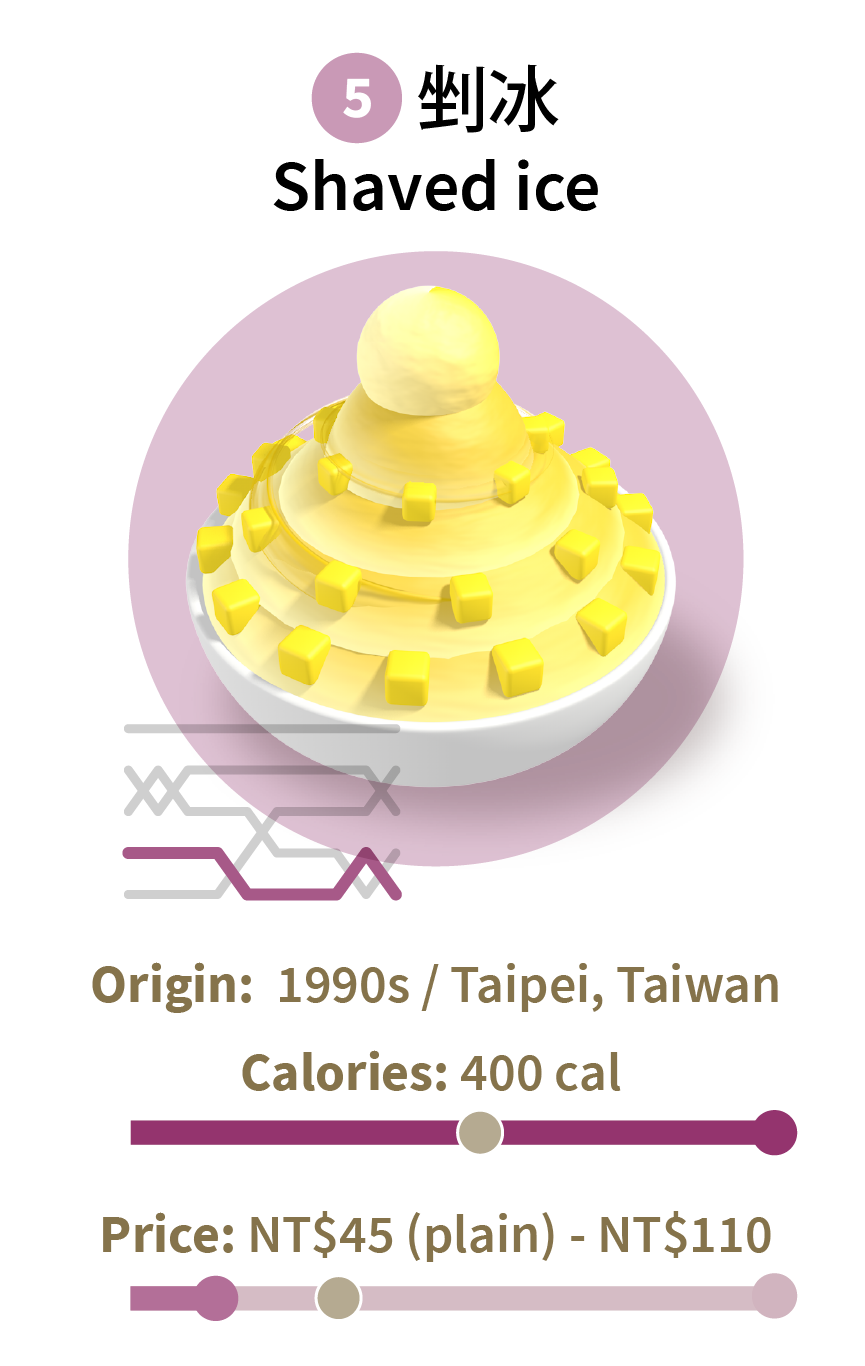
Shaved ice came to Taiwan during Japanese occupation. Now, it’s often eaten with local syrups and fresh fruit—the perfect way to cool down during the hot summer months.
Additional editing: Joyce Chou
Development of Svelte version: Leandro Collares & Julia Janicki.
Sources: Google Trends data, MyFitnessPal, Wikipedia, Movable Feasts, Medium, Eater, SETN, The News Lens, Fanale Drinks, Nyonya Cooking, Phase Changes Kitchen
This is part of 2022 #30DayChartChallenge Timeseries: down/upwards
